
Growing from cuttings won’t give you a garden overnight, but you will get plants for free. And you’ll have the satisfaction of looking at plants you’ve learnt how to propagate yourself.
Plus it’s a fun activity and you can even get the children involved.
When you grow from a cutting, you’re creating a clone of the parent plant. So, if you choose a plant that has great leaf or flower colour, you’re guaranteed the cutting-grown plant will have the same characteristics.
The correct propagating medium influences how many cuttings will root and the quality of the root system. Use a seed-raising mix or make your own with a mix of two parts river sand and one part compost.
Dip the cuttings in hormone gel or cutting powder to encourage the production and even distribution of roots. They help cuttings to form a callus and shorten the time taken by the plant to root.
GROW TIP Stem cuttings are the most common and are divided into three groups called softwood, semi-ripe and hardwood cuttings.
DESIGN TIP Lavender, box, murraya and rosemary all grow easily from semi-ripe cuttings, so use them to create a beautiful hedge.
Semi-ripe cuttings
To propagate evergreens, climbers, shrubs and conifers, take semi-ripe cuttings from the top or outer growth just after a flush of growth.
The stems should be partially mature and firm at the base while comparatively soft at the tops.
Now is the time to take cuttings of ripe wood that has hardened off after a growth spurt.
TRY Abelia, azalea, bay, begonia, camellia, clematis, fuchsia, gardenia, grevillea, hibiscus, lavender, lilly pilly, murraya, New Guinea impatiens, pelargonium, rose and westringia.
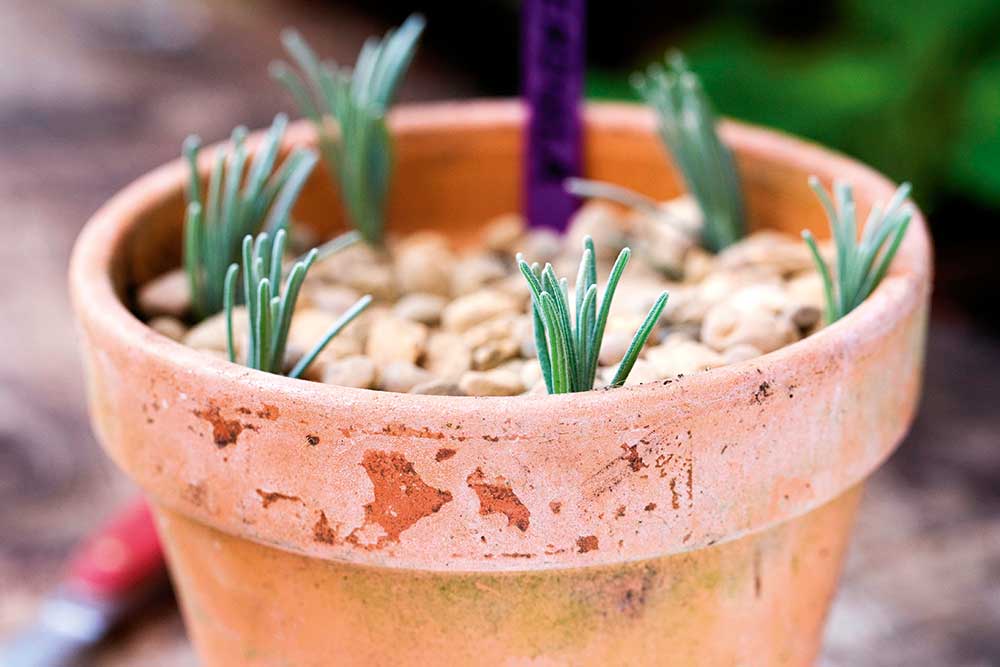 Plant cuttings in a pot filled with well-drained propagating mix
Plant cuttings in a pot filled with well-drained propagating mix
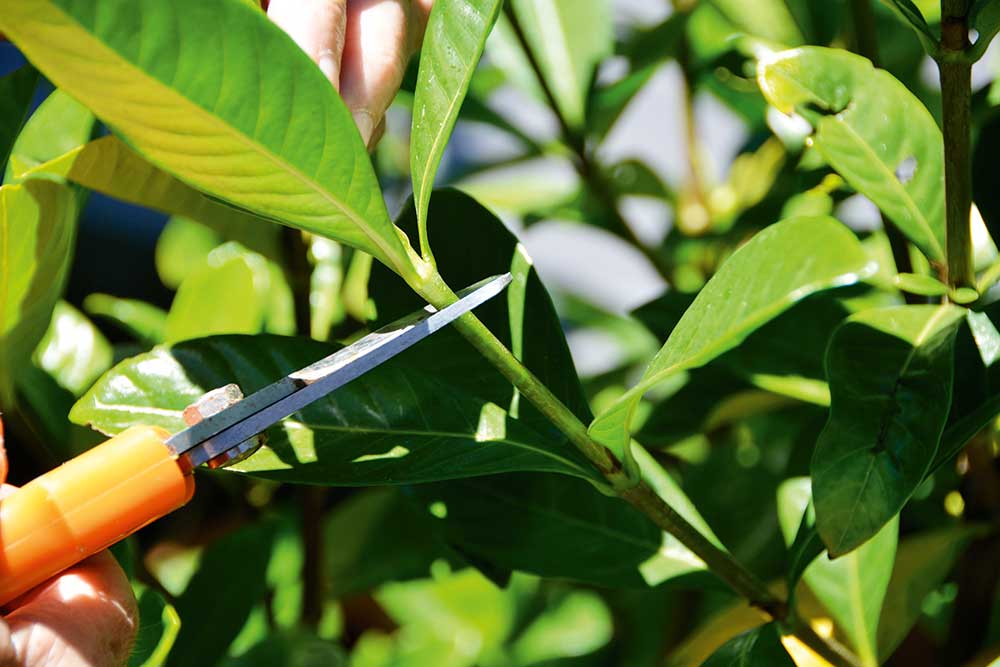
Use clean secateurs to take cuttings from healthy plants only
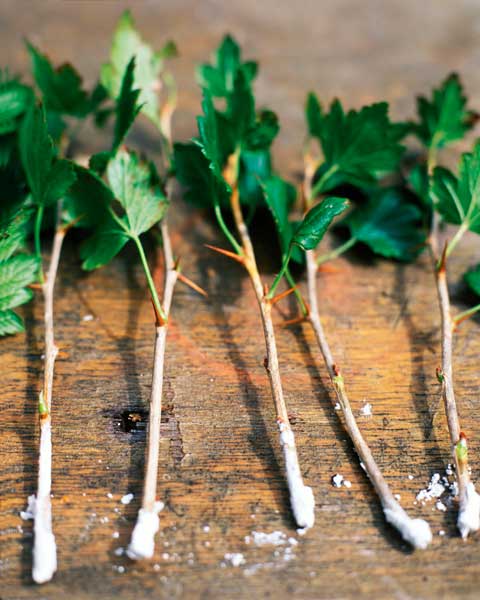
Remove the lower leaves and dip cuttings in hormone powder
Grow in a mini greenhouse
Both softwood and semi-ripe cuttings need humidity to root. A mini greenhouse is ideal for providing humid conditions. If it’s too small for long cuttings, you can make your own.
Use a polystyrene or wooden box and cover it with a sheet of glass.
For potted cuttings, add small bamboo stakes around the pot edge and cover it with clear plastic, making sure it doesn’t touch the plants.
Or you can cut large, clear soft drink bottles in half and up-end these over the potted cuttings.
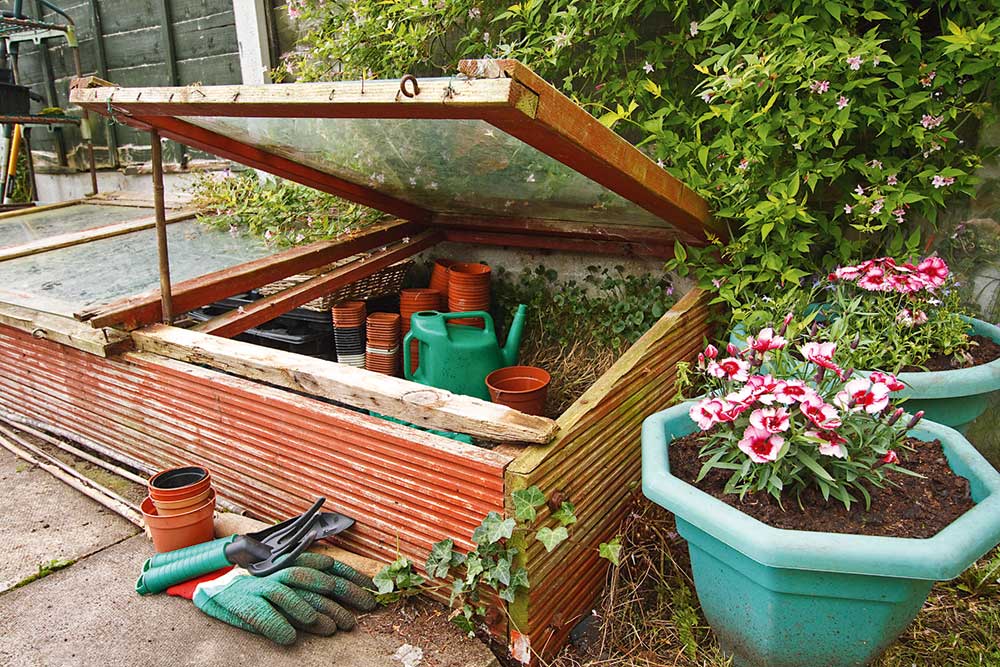
Use a cold frame to root cuttings of shrubs and herbs in winter
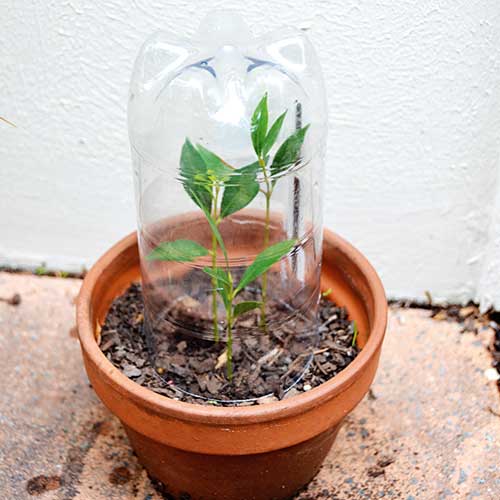
To create a mini greenhouse, cut the base off a clear plastic drink bottle and use it to cover cuttings
Softwood cuttings
Many herbaceous perennials and shrubs can be started from cuttings taken when the plant is in active growth in spring to early summer.
These are called softwood cuttings because the material is soft and new.
Take the cuttings from 75-100mm terminal growths, and remove the lower leaves but keep the upper, then pot up in the same way as semi-ripe cuttings.
Many softwood cuttings, such as coleus, begonia and pelargonium, can grow roots in a glass of water. When the roots have formed, pot up the cuttings or plant out.
Taking root
Keep the mix moist but not wet, then in 6-8 weeks, gently pull the stems to test if the cuttings have taken root. If they feel firm, then roots have formed.
Transplant rooted cuttings into individual pots filled with quality potting mix and let them grow until they are large enough to go in the ground.
Hardwood cuttings
Deciduous shrubs and climbers grow easily from hardwood cuttings that are taken during winter.
Select only strong, healthy and ripened stems, measuring at least 150-200mm long and about the thickness of your little finger.
Make an angled top cut just above a node, and a horizontal cut below a pair of nodes at the stem base.
The angled cut prevents you from mistakenly planting the cuttings upside down and, when planted, lets water run off the cutting.
Plant hardwood cuttings at a depth of a third to half their length in a container filled with propagating mix to ensure good drainage.
Position in a well-lit spot and don’t let them dry out, and roots will form in 8-10 weeks. When new spring growth appears, transplant into larger pots in good-quality potting mix.
TRY Abelia, buddleia, crepe myrtle, deutzia, forsythia, frangipani, mock orange, lemon-scented verbena, hydrangea, pomegranate, tibouchina, wisteria and weigela.
GROW TIP Plant hardwood cuttings in trenches in beds. Once they take root, transplant them to their permanent positions
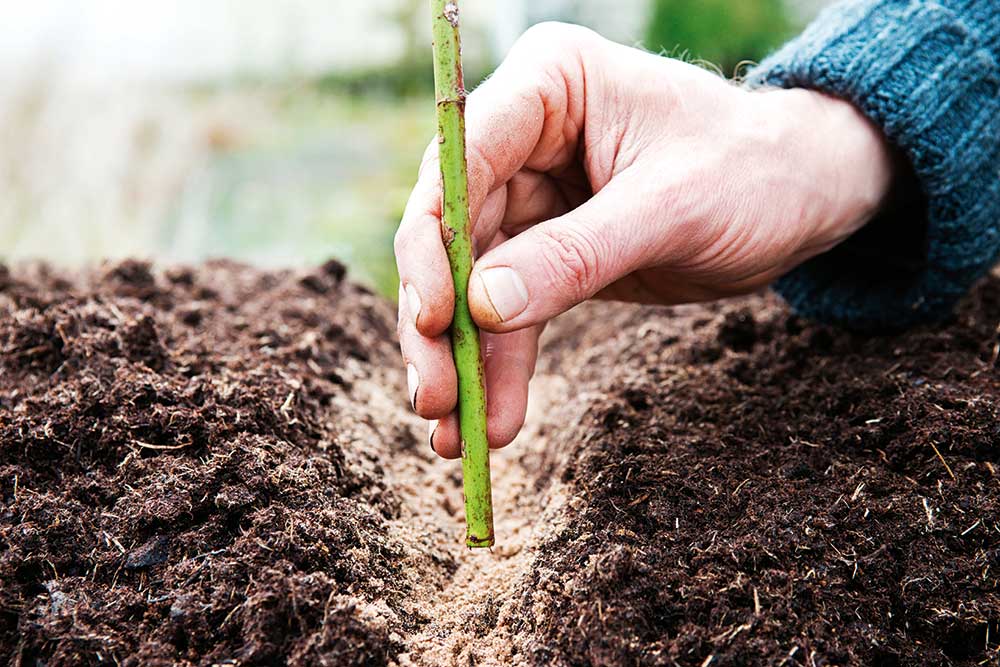
Cut and store
Take cuttings in the early morning when plant tissues contain the most water, and always work in a shady spot so they don’t dry out.
If there is a delay in potting up cuttings, store them in a plastic bag in the fridge.
How to grow frangipani from cuttings
You can get immediate results with large cuttings of frangipani, as even 2m long branches will grow roots.
Take the cutting in late winter when the tree has lost all of its leaves.
Select the branch you want and remove it from the tree. The cutting will ooze a milky sap, so wear gloves and safety glasses and keep it away from children and animals.
Lay the cutting outdoors on concrete or paving for several weeks to allow the wound to heal and eventually form a callus.
The cutting can then be planted in a pot or straight into the ground in the spot where you want it to grow.
TIP Larger cuttings will need a stake to hold them in position.
BUDGET TIP Take more cuttings than you need to allow for the odd failure. Give away extra plants or sell at a market or school fete.
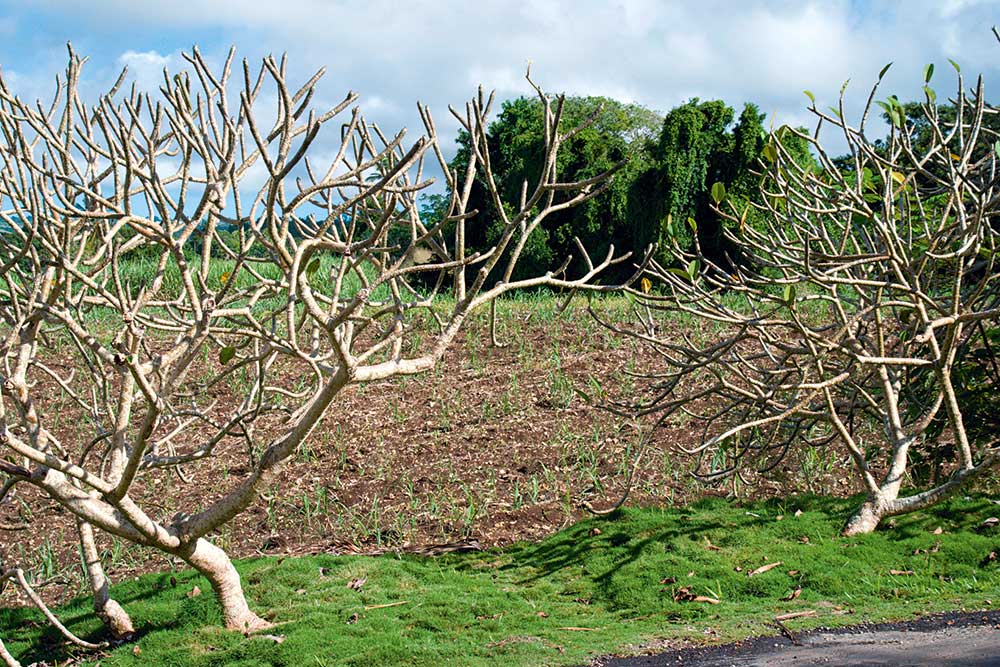
You can get immediate results with large cuttings of frangipani, as even 2m long branches will grow roots
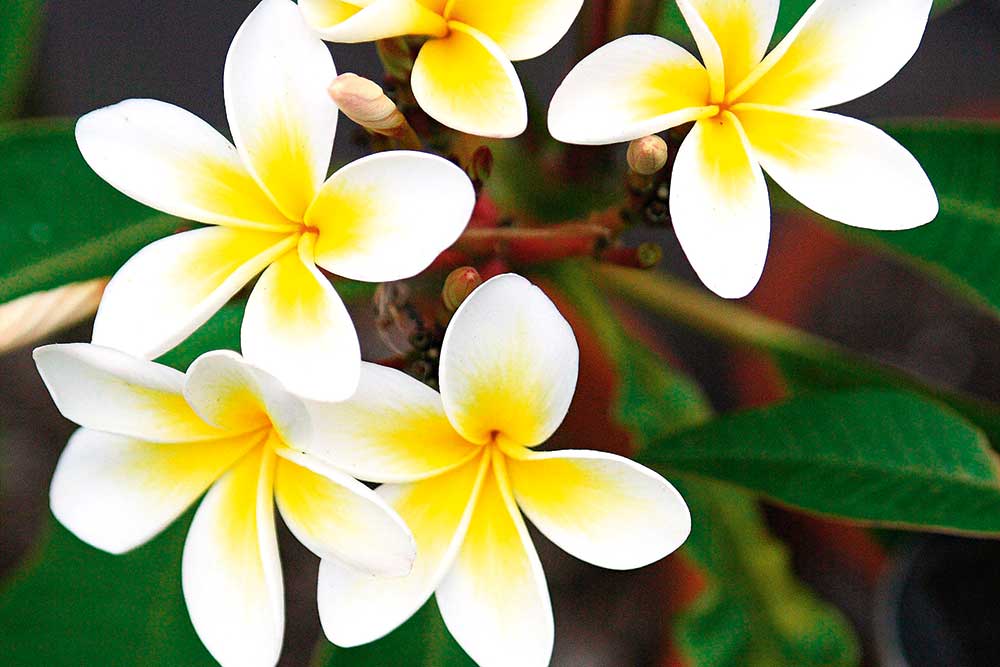
Grow a fragrant frangipani from a cutting taken in late winter

